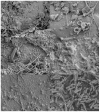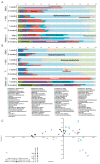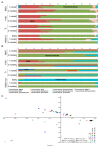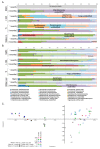Influence of Chlorination and Choice of Materials on Fouling in Cooling Water System under Brackish Seawater Conditions
- PMID: 28773597
- PMCID: PMC5456818
- DOI: 10.3390/ma9060475
Influence of Chlorination and Choice of Materials on Fouling in Cooling Water System under Brackish Seawater Conditions
Abstract
Cooling systems remove heat from components and industrial equipment. Water cooling, employing natural waters, is typically used for cooling large industrial facilities, such as power plants, factories or refineries. Due to moderate temperatures, cooling water cycles are susceptible to biofouling, inorganic fouling and scaling, which may reduce heat transfer and enhance corrosion. Hypochlorite treatment or antifouling coatings are used to prevent biological fouling in these systems. In this research, we examine biofouling and materials' degradation in a brackish seawater environment using a range of test materials, both uncoated and coated. The fouling and corrosion resistance of titanium alloy (Ti-6Al-4V), super austenitic stainless steel (254SMO) and epoxy-coated carbon steel (Intershield Inerta160) were studied in the absence and presence of hypochlorite. Our results demonstrate that biological fouling is intensive in cooling systems using brackish seawater in sub-arctic areas. The microfouling comprised a vast diversity of bacteria, archaea, fungi, algae and protozoa. Chlorination was effective against biological fouling: up to a 10-1000-fold decrease in bacterial and archaeal numbers was detected. Chlorination also changed the diversity of the biofilm-forming community. Nevertheless, our results also suggest that chlorination enhances cracking of the epoxy coating.
Keywords: Baltic Sea; biofilm; biofouling; materials science; microbial influenced corrosion.
Conflict of interest statement
The authors declare no conflict of interest.
Figures








References
-
- Fleming H.C. In: Microbially Influenced Corrosion of Materials. Heitz E., Fleming H.C., Sand W., editors. Springer-Verlag; New York, NY, USA: 1996. pp. 6–14.
-
- Cristiani P., Perboni G., Debenedetti A. Effect of chlorination on the corrosion of Cu/Ni 70/30 condenser tubing. Electrochim. Acta. 2008;54:100–107. doi: 10.1016/j.electacta.2008.05.081. - DOI
LinkOut - more resources
Full Text Sources
Other Literature Sources

